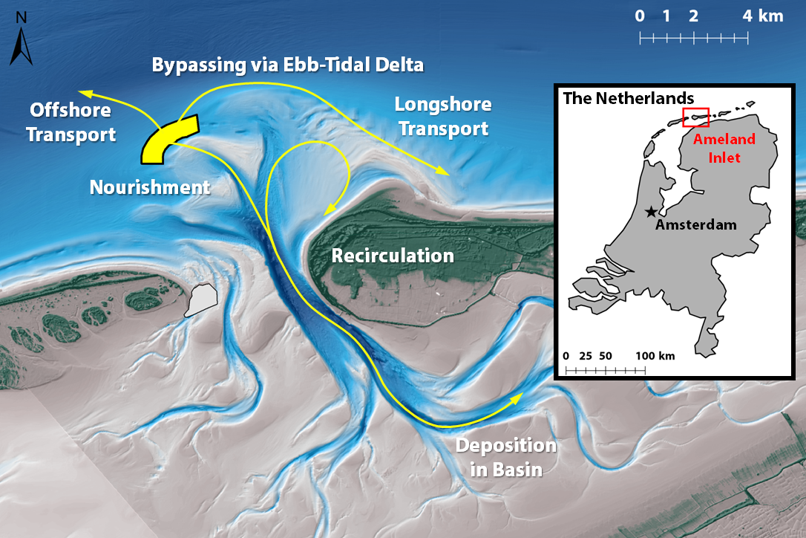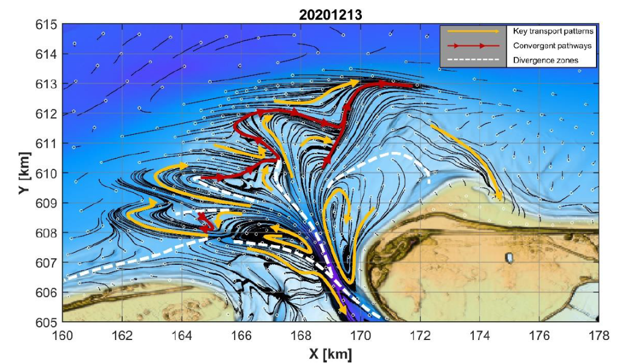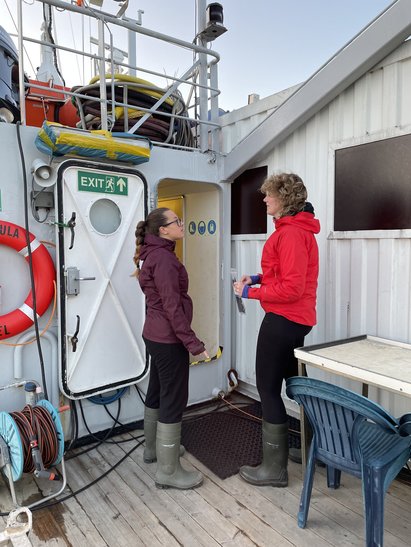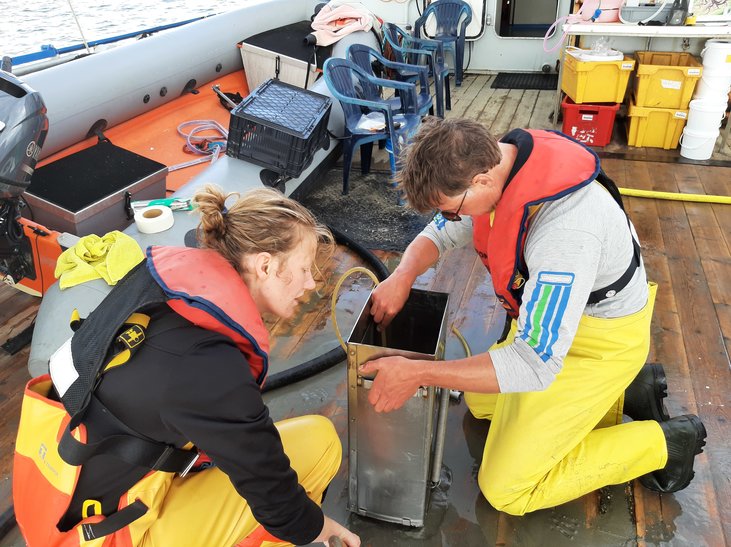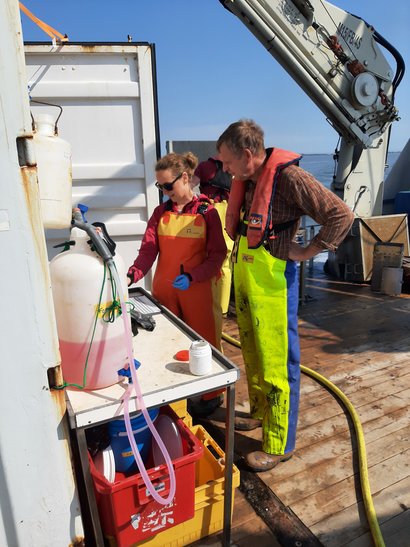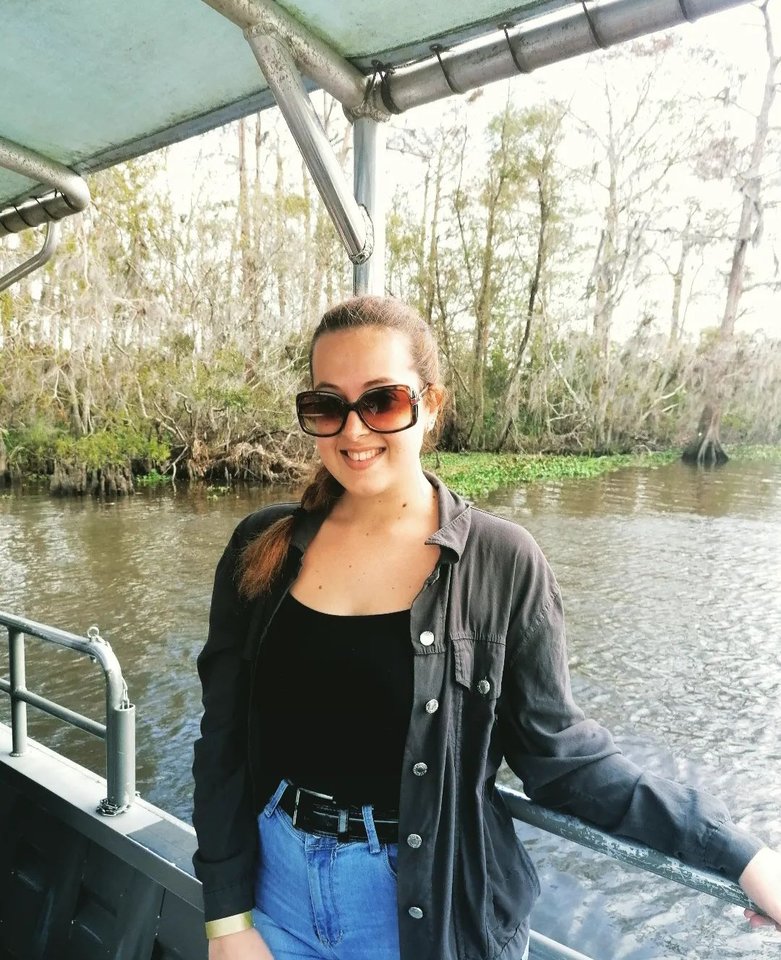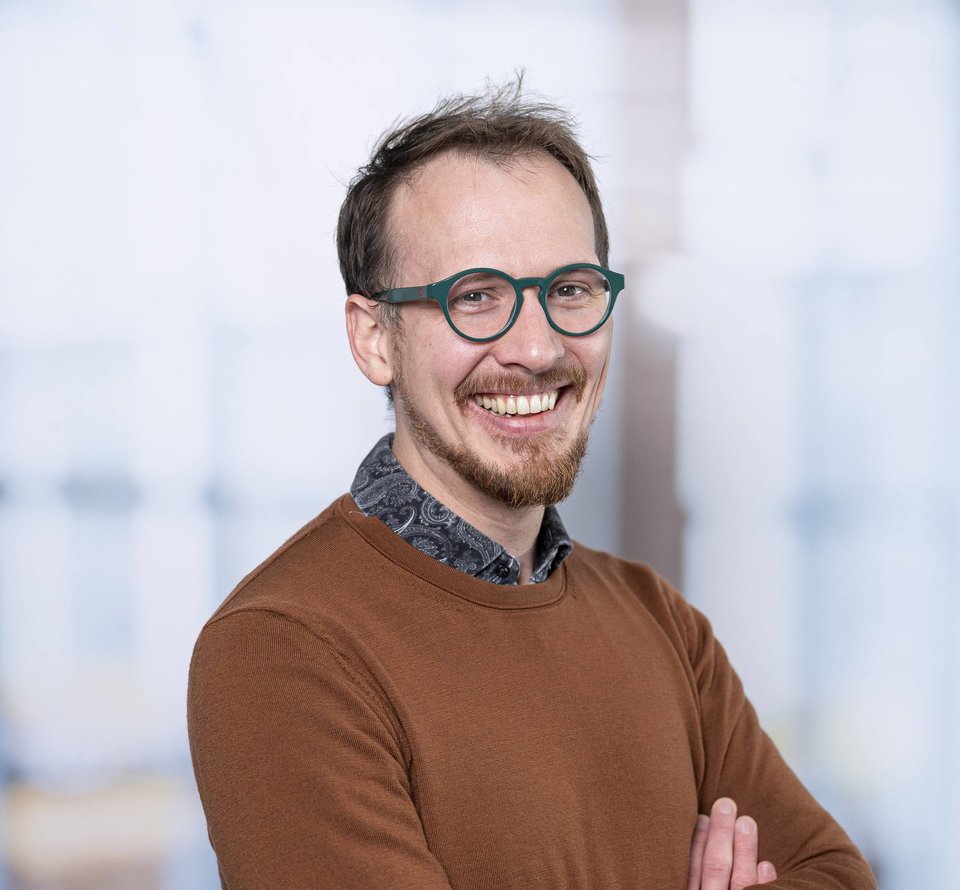TRAILS - TRacking Ameland Inlet Living Lab Sediment
Project goals
Sand nourishment is now the preferred coastal management strategy in the Netherlands to prevent coastal erosion and drowning of intertidal areas of the Wadden Sea. Nourishments aim to enhance safety, while simultaneously promoting natural and recreational values. However, it is poorly understood how nourished sand is dispersed, and what the impacts are for diverse coastal functions like biodiversity, fisheries and safety. In this project, Ameland Inlet is our Living Laboratory to develop and test methods to determine the fate of nourishment sand, and to work with stakeholders to clarify impacts and co-assess nourishment strategies. The aim of the TU Delft division is to develop and test novel simulation approaches to trace pathways of different sediment types and predict sediment dispersal and morphodynamic responses to different nourishment strategies.
Key questions and research strategy
Where does the sediment from a nourishment go after it is placed? We can estimate the pathways that sediment takes by using computer simulations that approximate the physics of waves, currents, and sediment transport. Sediment transport can be analysed from the perspective of moving grains (Lagrangian viewpoint) or by looking at morphodynamic changes (Eulerian viewpoint), and each approach is suited for different purposes. Here the TU Delft team applies both approaches with the goal of improving existing sediment transport models and optimizing sand nourishment strategies. The work develops from the following questions:
1: How to improve sediment transport models to better understand sediment pathways? We will further develop the SedTRAILS (Sediment TRAnsport vIsualization & Lagrangian Simulator) model to improve its ability to estimate coastal sediment pathways.
2: What pathways do individual grains of nourished sand take as they disperse along the coast? SedTRAILS will be applied to the case of the Ameland ebb-tidal delta nourishment, relying closely on the work of Anna-Maartje de Boer (Wageningen University & Research, PhD) to validate the model. We will collaborate with Anna-Maartje to also develop a model that can provide a framework for the interpretation of luminescence data for field based sediment tracing.
3: How do nourishments affect the morphodynamic evolution of the surrounding area? To fully understand the dispersal of nourishments and subsequent impacts, the morphodynamic evolution will be simulated using Delft3D/DFlow-FM models. We will also collaborate with Tjitske Kooistra (NIOZ, PhD) to estimate the potential interaction of nourished sediment with benthic ecosystems.
4: How can process-based numerical models be used to design more effective nourishments? Together, the results of both the particle tracking and morphodynamic modelling are used to test hypotheses of sediment dispersal. For instance, sediment transport from nourishments to sensitive ecological habitats can be assessed. Furthermore, the numerical model provides a “Virtual Lab” developed by Van Hall Larenstein (VHL) University of Applied Sciences to complement the “Living Lab”, enabling multiple nourishment designs and scenarios to be assessed together with stakeholders. From these experiments, a set of more general guidelines or techniques for effective nourishments are derived. Additionally, the particle tracking module provides visualizations of the sediment for easy engagement and interaction with stakeholders.
Partners
- Wageningen University and Research
- NIOZ
- Van Hall Larenstein (VHL) University of Applied Sciences
- Rijkswaterstaat
- Deltares
Contact
For further details about the project, visit the website. If you have any questions about the TRAILS project, please contact Natascia Pannozzo (N.Pannozzo@tudelft.nl), Stuart G. Pearson (S.G.Pearson@tudelft.nl) or Bram C. Van Prooijen (b.c.vanprooijen@tudelft.nl).
